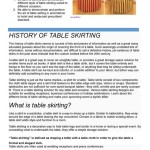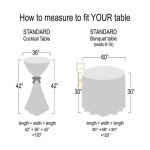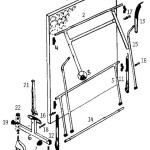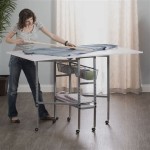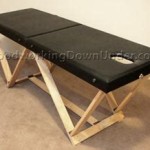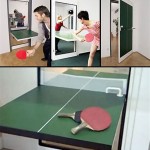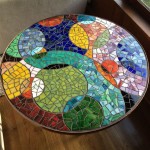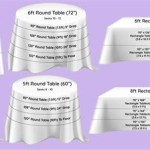How To Build a Coffee Table From Pallets: Ideas for Beginners
Repurposing shipping pallets into furniture has gained popularity, particularly for crafting unique and affordable coffee tables. Pallet wood, with its rustic texture and inherent character, offers a cost-effective and environmentally conscious alternative to commercially manufactured furniture. This article provides a comprehensive guide for beginners on how to build a coffee table from pallets, outlining essential steps, materials, and design considerations.
Before embarking on the project, meticulous planning and preparation are crucial. This includes selecting suitable pallets, gathering necessary tools, and understanding basic woodworking techniques.
Selecting and Preparing Pallets
The first step involves sourcing pallets. These can often be found at local businesses, construction sites, or online marketplaces. Prioritize pallets that are in good condition, free from significant damage, and marked with the IPPC (International Plant Protection Convention) stamp. This stamp indicates that the pallet has been treated according to international standards, reducing the risk of harboring pests or diseases. Avoid pallets marked with "MB," which signifies methyl bromide fumigation, a highly toxic chemical. Heat-treated (HT) pallets are generally safer for repurposing.
Once a suitable pallet is acquired, thorough cleaning is essential. This involves removing any staples, nails, or debris embedded in the wood. A crowbar or specialized nail puller can be used for this purpose. After removing the debris, scrub the pallet with soap and water to remove dirt, grime, and potential contaminants. A pressure washer can be used for more stubborn stains, but ensure the wood dries completely before proceeding to the next step.
After cleaning, sanding the pallet is crucial for creating a smooth and safe surface. Begin with a coarse-grit sandpaper (e.g., 80-grit) to remove rough edges and imperfections. Progress to finer grits (e.g., 120-grit, then 220-grit) for a smoother finish. Consider using an orbital sander to expedite the sanding process, but always wear a dust mask and eye protection to prevent inhaling sawdust and protecting vulnerable skin from splinters.
Following sanding, consider treating the pallet wood with a wood preservative or sealant. This will protect the wood from moisture, pests, and decay, extending the life of the coffee table. Apply the preservative or sealant according to the manufacturer's instructions, ensuring adequate ventilation during application.
Design and Construction Techniques
The design of the coffee table can vary depending on personal preferences and available space. A simple design involves using the entire pallet as the tabletop, with legs attached to the underside. Alternatively, the pallet can be disassembled and the individual boards used to create a custom-sized tabletop. Consider integrating features such as a lower shelf for storage or adding casters for mobility.
For a basic coffee table design, the pallet can be used as a whole or cut down to the desired size. Measure and mark the desired dimensions on the pallet. Use a circular saw or hand saw to cut the pallet to the specified size. Ensure the cuts are straight and accurate for a professional-looking finish.
Selecting appropriate legs for the coffee table is crucial for stability and aesthetics. Options include pre-made metal or wooden legs, repurposed furniture legs, or even creating custom legs from pallet wood. Ensure the legs are sturdy and capable of supporting the weight of the tabletop and any items placed on it. Attach the legs to the underside of the pallet using screws or bolts. Consider using wood glue in addition to screws for a stronger and more durable connection. Predrill pilot holes before inserting screws to prevent the wood from splitting.
If a lower shelf is desired, measure and cut additional pallet boards to the required dimensions. Attach these boards to the underside of the tabletop, creating a shelf that spans the width of the coffee table. Use screws and wood glue to secure the shelf boards in place. Ensure the shelf is level and evenly spaced.
For added mobility, attach casters to the legs of the coffee table. Select heavy-duty casters that can support the weight of the table and its contents. Attach the casters using screws or bolts. Ensure the casters are securely fastened to the legs.
Finishing and Customization
Once the basic structure of the coffee table is complete, the finishing touches can be applied. This may involve staining, painting, or applying a clear coat to protect the wood and enhance its appearance. Staining the wood can enhance its natural grain and add depth of color. Painting the wood can provide a more contemporary and customizable look. A clear coat can protect the wood from scratches, stains, and moisture.
Before applying any finish, ensure the surface is clean and smooth. Lightly sand the surface with fine-grit sandpaper to remove any imperfections. Apply the stain, paint, or clear coat according to the manufacturer's instructions. Apply multiple coats for a more durable and professional-looking finish. Allow each coat to dry completely before applying the next.
Consider adding decorative elements to the coffee table to personalize its appearance. This may involve adding stencils, painting designs, or attaching hardware such as drawer pulls or decorative handles. Experiment with different techniques and materials to create a unique and personalized coffee table.
Inlaying glass or epoxy resin within the pallet structure is another customization option. The dimensions of the glass or resin section should be carefully measured to ensure a snug fit within the pallet's frame. The glass or resin can be secured with adhesive or by building a custom frame within the pallet.
For a rustic aesthetic, intentionally leave some imperfections in the pallet wood, such as knots or nail holes. These imperfections can add character and charm to the coffee table. However, ensure that any sharp edges or protruding nails are removed to prevent injury.
When working with pallet wood, safety is paramount. Always wear safety glasses, a dust mask, and gloves to protect yourself from injury. Use power tools with caution and follow the manufacturer's instructions. Work in a well-ventilated area to avoid inhaling sawdust or fumes from finishes.
Proper tools are important. A circular saw, hand saw, orbital sander, drill, screwdriver, hammer, crowbar, measuring tape, and safety equipment are essential for constructing a coffee table from pallets. Investing in quality tools will make the project easier and more efficient. Consider renting or borrowing tools if you do not own them.
The choice of wood glue is also important. A high-quality wood glue will provide a strong and durable bond between the pallet boards. Choose a wood glue that is suitable for exterior use if the coffee table will be placed outdoors. Apply the wood glue liberally to the surfaces being joined and clamp the pieces together until the glue dries.
Clamping the pallet boards together during the gluing process is critical for ensuring a strong and even bond. Use clamps to apply pressure to the boards and hold them in place until the glue dries. Position the clamps strategically to distribute the pressure evenly across the surface. Allow the glue to dry completely before removing the clamps.
Consider the overall aesthetic of the room when designing the coffee table. Choose a design and finish that complements the existing furniture and decor. A rustic coffee table may be suitable for a farmhouse or industrial-style room, while a more contemporary coffee table may be better suited for a modern or minimalist space.
Regular maintenance is essential for preserving the appearance and lifespan of the coffee table. Clean the coffee table regularly with a damp cloth to remove dust and dirt. Apply a fresh coat of finish every few years to protect the wood from moisture and wear. Avoid placing hot or wet items directly on the surface of the coffee table to prevent damage.
Addressing Common Challenges
Working with pallet wood can present certain challenges. Pallet wood is often uneven and may contain knots, cracks, or other imperfections. These imperfections can be incorporated into the design of the coffee table or filled with wood filler to create a smoother surface. Pallet wood can also be difficult to cut and sand due to its hardness and density. Using sharp tools and applying consistent pressure will help to overcome these challenges.
Another common challenge is finding pallets that are in good condition and free from contaminants. Inspect pallets carefully before using them and avoid pallets that show signs of damage or infestation. As mentioned before, Pallets marked with "MB" should be avoided due to the use of methyl bromide fumigation.
Attaching legs securely to the pallet wood can also be challenging. Pallet wood is often uneven and may contain voids or weak spots. Use wood glue and screws to create a strong and durable connection between the legs and the pallet. Predrill pilot holes before inserting screws to prevent the wood from splitting.

Diy Pallet Wood Coffee Table

Diy Pallet Coffee Table Gets An Outdoor Makeover Southern Revivals

Mango Tomato Diy Make Your Own Pallet Coffee Table

Diy Pallet Coffee Table Gets An Outdoor Makeover Southern Revivals

25 Diy Pallet Coffee Table Plans And Ideas How To

My Diy Wood Pallet Coffee Table Shrimp Salad Circus

One Of A Kind Pallet Wood Table

Diy Pallet Coffee Table Gets An Outdoor Makeover Southern Revivals

Diy Pallet Wood Coffee Table

40 Diy Wooden Pallet Coffee Table Ideas

